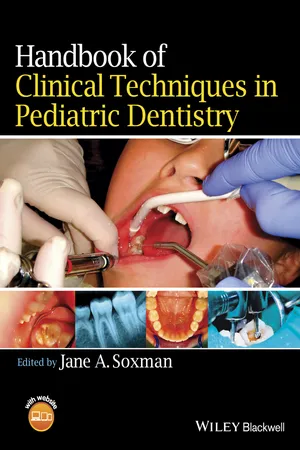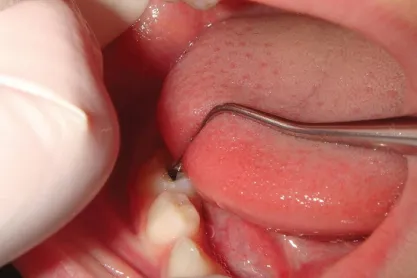
- English
- ePUB (mobile friendly)
- Available on iOS & Android
Handbook of Clinical Techniques in Pediatric Dentistry
About This Book
The Handbook of Clinical Techniques in Pediatric Dentistry provides the clinician with an increased level of expertise and skills for timely identification and intervention for various presentations in the developing dentition. It also clearly describes procedures for treatment in the primary and young permanent dentitions, including pulp therapy for primary and young permanent molars, extractions, space maintenance, and more. The most commonly encountered treatment needs are discussed with the goal of increasing clinician and staff confidence while decreasing chair-time and stress. With an emphasis on practical instruction, The Handbook of Clinical Techniques in Pediatric Dentistry is ideal for pediatric and general dentists, pediatric residents, and dental students taking clinical pediatric courses.
Frequently asked questions
Information
Chapter 1
Interim therapeutic restoration in the primary dentition
Indications




Procedure



Materials
Table of contents
- Cover
- Title Page
- Copyright
- Table of Contents
- List of contributors
- Foreword
- Preface
- Acknowledgments
- About the companion website
- Chapter 1: Interim therapeutic restoration in the primary dentition
- Chapter 2: Local anesthesia for the pediatric patient
- Chapter 3: Primary incisor restoration
- Chapter 4: Primary molar adhesive tooth restoration
- Chapter 5: Full coverage restoration for primary molars
- Chapter 6: Vital pulp therapy for primary molars
- Chapter 7: Pulpectomy for primary teeth
- Chapter 8: Extraction of primary dentition
- Chapter 9: Sealants
- Chapter 10: Indirect pulp therapy for young permanent molars
- Chapter 11: Direct pulp therapy for young permanent molars
- Chapter 12: Diagnosis and treatment of molar–incisor hypomineralization
- Chapter 13: Ectopic eruption of maxillary first permanent molar
- Chapter 14: Ectopic eruption of maxillary permanent canines
- Chapter 15: Infraocclusion of mandibular primary molars
- Chapter 16: Space maintenance
- Chapter 17: Pulpal treatment in young permanent incisors following traumatic injuries
- Chapter 18: Reattachment of permanent incisor enamel fragments
- Chapter 19: Non-nutritive sucking and parafunctional habits
- Chapter 20: Behavior guidance
- Index
- End User License Agreement